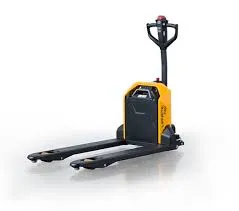


Electric Winch Design Key Considerations and Features
Electric winches have become essential tools in various industries, from construction and shipping to recreational activities such as off-roading and sailing. Their primary function is to pull or lift heavy loads using a motorized system, which provides significant mechanical advantage and efficiency. In designing an electric winch, several key factors must be considered to ensure optimal performance, safety, and reliability.
Motor Selection
The motor is the heart of the electric winch, and its selection is critical. Typically, electric winches use either AC or DC motors. DC motors are popular due to their compact size, ease of control, and high torque output at low speeds. However, AC motors can be more efficient, particularly for prolonged use. The choice between the two often depends on the application and environment.
The motor's power rating, measured in horsepower, should align with the maximum load the winch is designed to handle. It is crucial to include a safety margin—around 20% more than the maximum load—to prevent overheating and excessive wear.
Gear Ratio
The gear ratio of a winch significantly impacts its lifting capability and speed. A lower gear ratio provides higher torque, making it ideal for lifting heavy loads, while a higher gear ratio allows for faster operation but at the expense of torque. Engineers must find a balance based on the intended application.
For instance, in scenarios requiring heavy lifting, a 51 gear ratio might be used, whereas a 1001 ratio would suit applications needing slower, controlled lifts, such as in construction or manufacturing settings.
Drum Design

The winch drum is where the rope or cable is wound. The drum’s diameter and width must accommodate the type of rope used—steel cables, synthetic ropes, or others—while ensuring sufficient capacity for the expected loads. Additionally, a smooth drum surface is vital to minimize wear on the rope and prevent snagging.
Safety Features
Safety is paramount in winch design. Incorporating features like automatic brakes, overload protection, and emergency stop functions can prevent accidents and enhance user safety. Automatic brakes engage if the load exceeds the winch’s capacity, preventing uncontrolled descents or load drops.
Moreover, incorporating limit switches can prevent over-reeling or under-reeling of the rope, safeguarding both the winch and the load. Including clear operational instructions and safety warnings on the winch itself also promotes safe usage practices.
Environmental Considerations
Electric winches are often used in harsh environments, so their design must consider factors such as moisture, dust, and temperature fluctuations. Materials like stainless steel or corrosion-resistant alloys can enhance durability. Additionally, weatherproofing the electrical components will ensure reliable operation, prolonging the lifespan of the winch.
Conclusion
In summary, designing an effective electric winch entails careful consideration of various elements, including motor selection, gear ratio, drum design, safety features, and environmental factors. Engineers must balance these components to create a robust, efficient, and safe winch that meets the needs of its intended application. As technology progresses, future innovations in electric winch design will likely increase efficiency, reduce energy consumption, and improve overall performance, making them even more indispensable in their respective fields.



